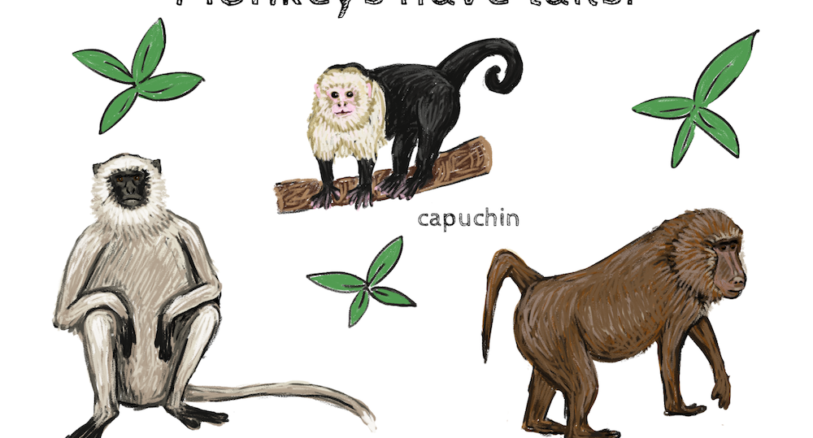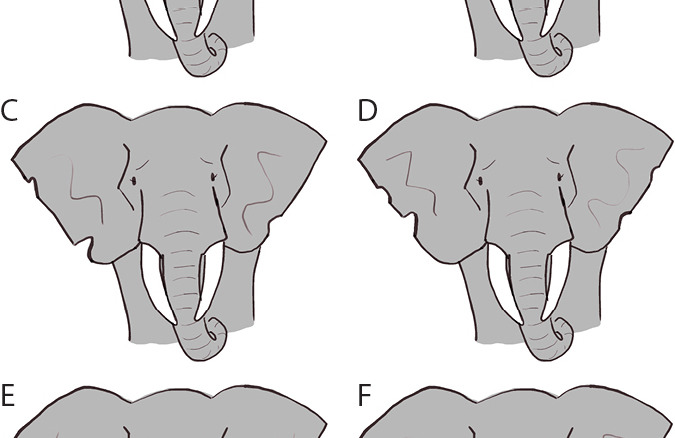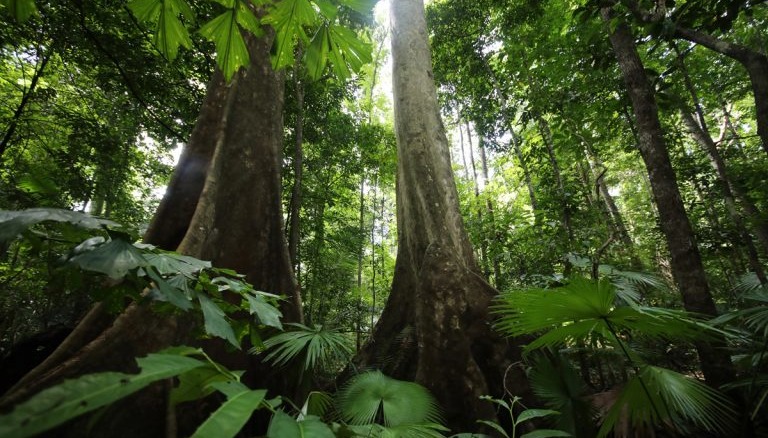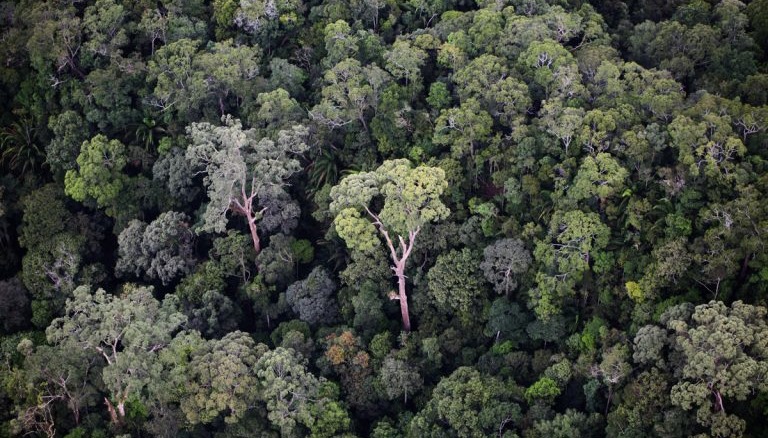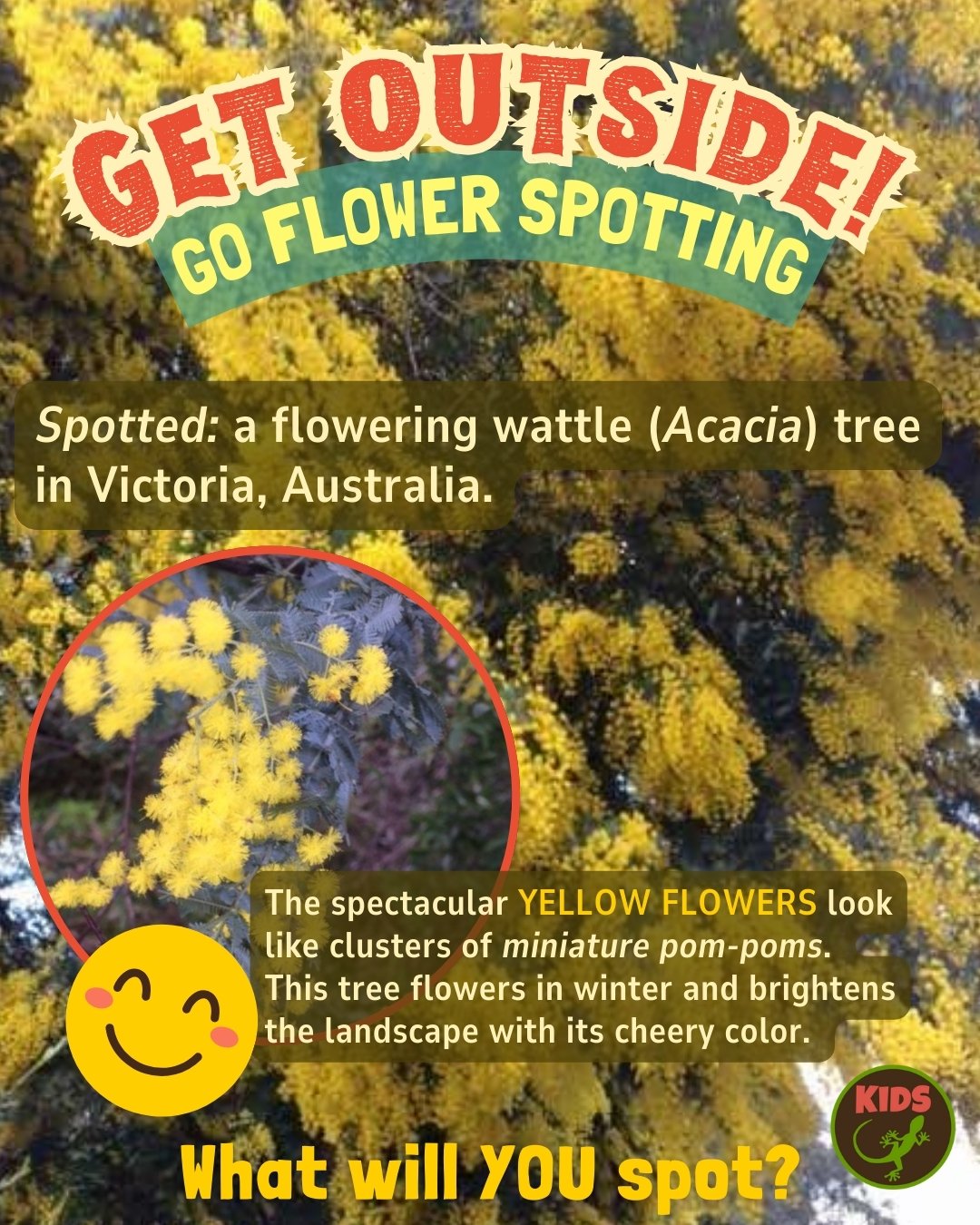
Nature challenge: What is flowering where you live?
Step 1) Find a plant in flower!
Your challenge this week is to go outside and find a plant that is blooming or producing flowers. Choose a plant you don’t already know. Part of your challenge is to find and identify something new!
Is there a flowering houseplant in your living room? Or a flowering plant on your balcony, in your garden, or maybe in a neighborhood park?

Did you know? The name for a flowering plant is an angiosperm.
Flowering plants include grasses, herbs, vegetables, annual plants (plants that flower and die in one season), perennial plants (plants that can live for several years), shrubs, and trees.
When do plants flower? Some plants flower in winter, others in spring, summer, or autumn. Some plants flower multiple times each year.

Once you’ve found a plant with flowers, study it closely and record some notes.
What type of plant did you choose? Is it a tree, a grass, a herb, or a small shrub?
Where did you find the plant? Is it growing in a pot, in a garden bed, or in the wild?
Is your plant growing in sand, rich brown soil, or soil full of clay? Is it growing near water (lake, pond, stream, creek, the ocean) or on top of a hill?
Draw pictures of it or take photographs of the flowers and leaves. You may also want to take photographs of the stem, trunk, bark or any other identifying characteristics that will help you figure out the name of your plant.
Step 2) Name it!
It is time to figure out the name of your flowering plant! Your goal could be to find out the plant’s common name, like wattle, geranium, or rose. Or you may want to learn its scientific name. The common name of the flowering plant below is silver wattle. Its scientific name is Acacia dealbata.
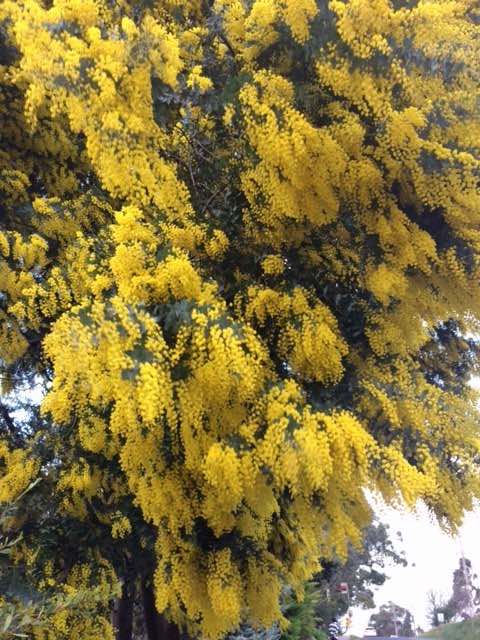
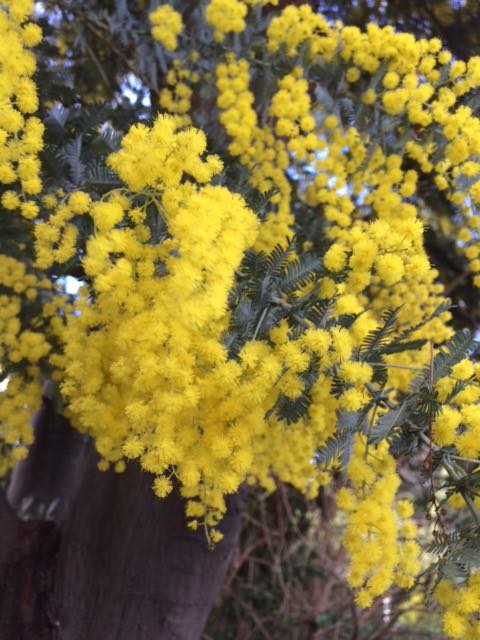
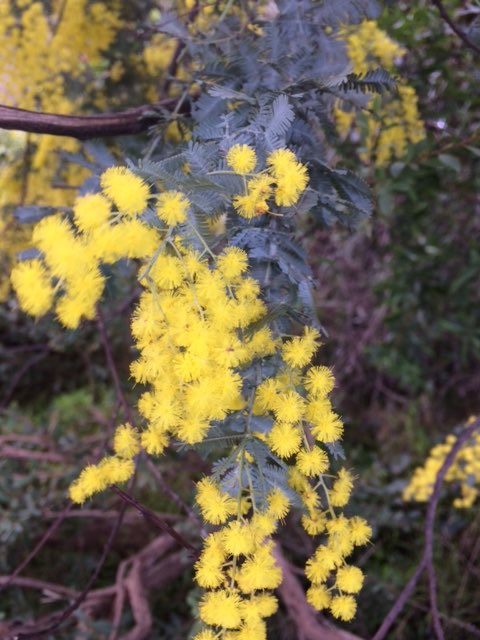
How do I go about finding out my plant’s name?
You can ask a knowledgeable adult to help you. This could be a parent, teacher, or someone you know who loves plants. You could also ask someone at your local nursery to help.
Or, do some research. There are a few ways to go about this:
- Library search: A librarian can help point you in the right direction.
- Internet search: Input key search words that describe the flowers and plant and where it is found. For instance, for the Australian wattle, phrases like “yellow flowers,” “flowers look like pom-poms,” “tree,” and “grows in southeastern Australia” all help. Look at the images that pop up in your search results and see if you can find a match!
- Plant ID app: Try out plant identification apps, such as Seek by iNaturalist. Ask your adult to help you find the best plant ID app for your local area.
Good luck! Spread your new-found knowledge. Share what you’ve learned with someone else.
More activities and stories about plants
Art activity: Make animals with leaves
Game: Leaf memory game
Game: Take the flower or not challenge
Get Outside: Go flower spotting
Comic: Show plants some love
Illustrated series: Talking to Plants
Interview: Seheno tells us about the mighty baobabs of Madagascar
Story: The Martu people of Western Australia burn their land to help plants grow
Story: Kids help restore Brazil’s Atlantic Forest
Story: Indigenous knowledge helps protect the redwood forest
Story: Fabulous ferns found! Herbariums help scientists discover new plant species

